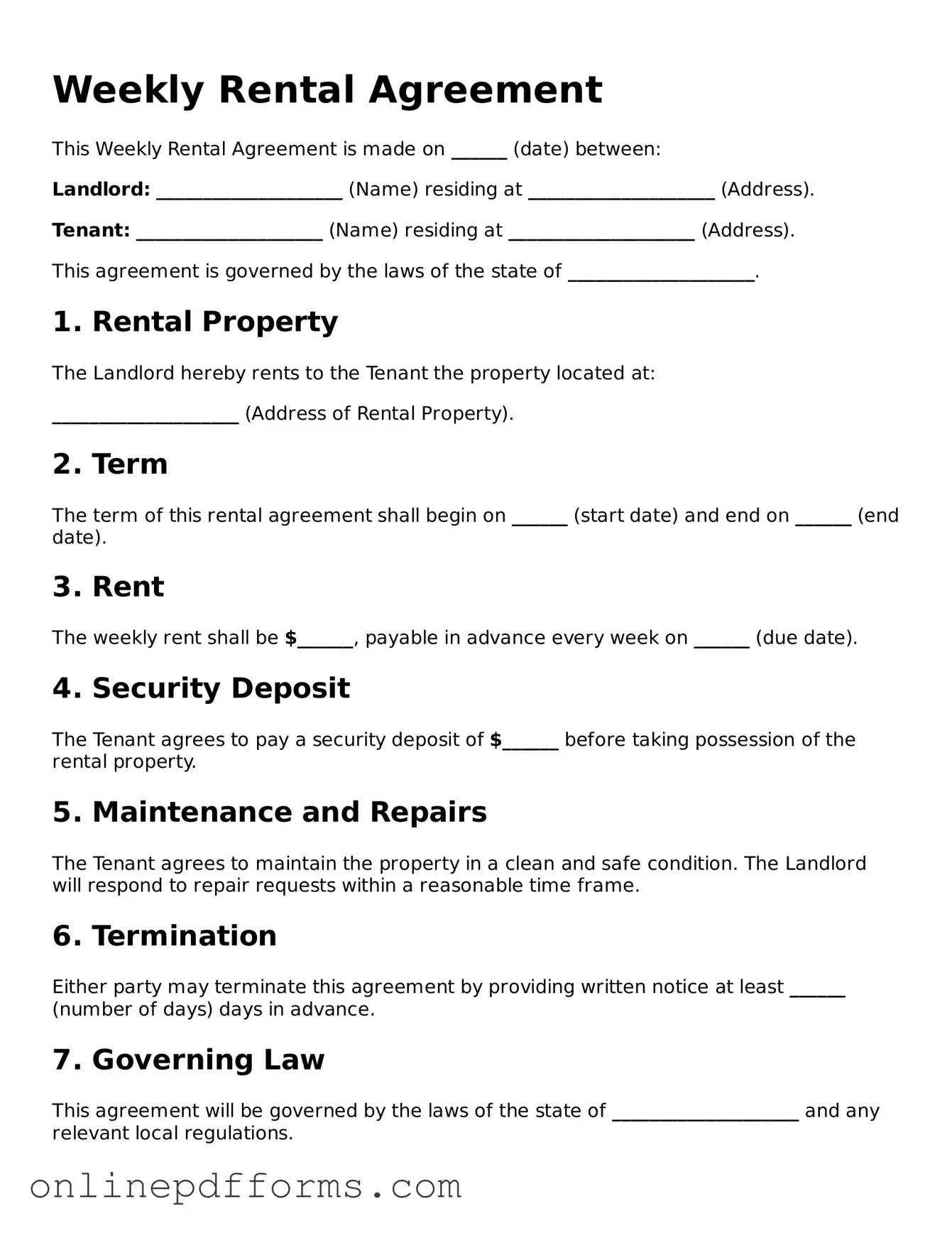The Lease Agreement is a long-term contract between a landlord and a tenant. It outlines the terms of renting a property, including rent amount, duration, and responsibilities of both parties. Like the Weekly Rental Agreement, it specifies payment terms and conditions, but it usually covers a longer time frame, typically a year or more.
Understanding the nuances of rental agreements is essential for both landlords and tenants to navigate their rental experiences effectively; for a detailed exploration of lease agreements and their importance in protecting both parties involved, you can read here.
The Month-to-Month Rental Agreement offers flexibility for both landlords and tenants. This document allows either party to terminate the agreement with proper notice. Similar to the Weekly Rental Agreement, it details rent payment, property use, and obligations, but it operates on a monthly basis instead of weekly.
A Sublease Agreement allows a tenant to rent out their leased property to another individual. This document requires the original tenant to remain responsible for the lease terms. Like the Weekly Rental Agreement, it includes payment details and property rules, but it involves three parties: the original tenant, the subtenant, and the landlord.
The Rental Application is a preliminary document that potential tenants fill out to express interest in renting a property. It collects personal and financial information to help landlords assess suitability. While the Weekly Rental Agreement formalizes the rental terms, the application serves as the first step in the rental process.
The Roommate Agreement is designed for individuals sharing a rental space. It outlines each roommate's responsibilities, including rent payment, utilities, and household chores. Similar to the Weekly Rental Agreement, it aims to prevent disputes by clearly defining expectations among co-tenants.
The Commercial Lease Agreement is specifically for renting business properties. It includes terms like rent, lease duration, and permitted business activities. While the Weekly Rental Agreement is for residential use, both documents share the purpose of establishing clear rental terms between landlord and tenant.
The Rent-to-Own Agreement allows tenants to rent a property with the option to purchase it later. This document combines elements of a rental agreement with a purchase agreement. Like the Weekly Rental Agreement, it specifies payment terms, but it also includes conditions for the eventual sale of the property.
The Tenancy Agreement is a broad term that covers various types of rental contracts. It can include both residential and commercial agreements. Similar to the Weekly Rental Agreement, it sets out the rights and responsibilities of both landlords and tenants, ensuring clarity in the rental arrangement.
The Eviction Notice is a document used by landlords to formally notify tenants of lease violations. It outlines the reasons for eviction and the time frame for tenants to respond. While it serves a different purpose than the Weekly Rental Agreement, both documents are essential in managing the rental relationship and ensuring compliance with the terms set forth.
